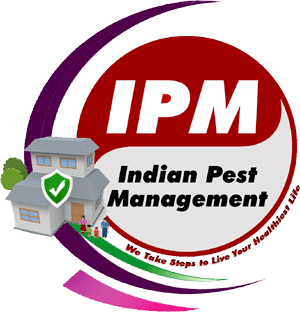Termite Treatment In Dehradun
Reach Us 24/7
Drill-Fill-Seal
Get a free inspection or schedule an appointment
Pre Construction Anti Termite Treatment
Pre-construction termite treatment represents a proactive measure aimed at protecting one’s property against termite infestations early on in the construction process. In addition to posing a substantial risk to structures, termites can cause costly and difficult-to-repair structural damage. By including pre-construction termite treatment in your architectural designs, you undertake a pivotal measure towards ensuring enduring protection.
Key Components:
Soil Treatment:
Termed termiticides are applied to the soil surrounding the construction location. By creating this barrier, termites are dissuaded from entering the structure.
Protection of Foundations:
Emphasising the foundation is critical. By means of termiticide application during the process of laying the foundation, a barrier is established to prevent termites from entering the structure via the soil.
Wood Treatment:
Construction components made of wood are vulnerable to termite infestations. Termite-resistant treatments or coatings are frequently applied to wood as part of pre-construction treatment, providing an additional layer of protection.
(1) Early Prevention:
Avoid Infestations: The implementation of pre-construction termite treatment effectively eliminates the possibility of infestations. This proactive measure is essential for preserving the structural integrity of your building.
(2) Cost-effectiveness:
Long-Term Cost Savings: Although pre-construction termite treatment requires an initial investment, it proves to be considerably more economical when compared to the extensive termite damage restorations that must be completed post-construction. Constantly, prevention is more cost-effective than restoration.
(3) Long-Term Protection:
Long-lasting Defence: The protective barriers and remedies that are implemented during the pre-construction phase endure, thereby ensuring an ongoing line of defence against termite infestations. This extended safeguarding measure guarantees the continued structural soundness of your property.
(4) Preserving the Value of the Property:
Properties that have been impacted by termites in the past may encounter a reduction in their market value. Treatment against termites prior to construction protects your investment by preserving the value and desirability of the property to prospective purchasers.
(5) Reduction of Structural Damage Risk:
Structural Integrity: By consuming wood components, termites can compromise the structural integrity of a building. Using pre-construction treatment, this danger is reduced, ensuring the stability and safety of your property.
(6) Mental Calmness:
The assurance that one’s property is fortified against termite threats contributes to a state of tranquilly and assurance. Pre-construction termite treatment enables occupants of both residential and commercial spaces to relish their surroundings without perpetually worrying about concealed termite damage.
(7) Environmental Friendliness:
Professional pre-construction termite remedies are specifically formulated to minimise their environmental impact. Their selective targeting of termites reduces the adverse effects on non-target organisms and ecosystems.
(8) Customised Solutions:
Personalised Approach: Experts in pest control have the ability to tailor pre-construction termite remedies in accordance with the particular requirements of your construction site. This customised strategy optimises efficacy.
(9) Prolonged Enhanced Property Lifespan:
Protection for Investments: Your property represents a substantial investment. Pre-construction termite treatment serves as a protective barrier, safeguarding the structure against the progressive deterioration that termites inflict.
Stage 1: Foundation Treatment
Site Inspection:
Our pre-construction termite treatment kicks off with a meticulous site inspection. We’re on the lookout for potential trouble spots, assessing the soil and surroundings for any signs of termite activity.
Soil Treatment:
Once we’ve identified the risk areas, we apply specialized termiticides to the soil around the foundation. This forms a robust barrier, deterring termites from approaching the construction site.
Foundation Perimeter Treatment:
To fortify the foundation, we extend the treatment to the perimeter. This creates an additional layer of protection, ensuring termites can’t infiltrate through the foundation.
Stage 2: Floor Concrete & Plinth Filling
Wood Treatment:
If wood is part of the construction, we take steps to safeguard it. Wood components receive targeted treatments or coatings, making them unappealing to termites and adding an extra shield of defense.
Concrete Treatment:
Concrete might seem resilient, but termites can find their way. We treat the concrete elements of the floor and plinth with termiticides, providing comprehensive protection against potential termite intrusion.
Physical Barriers Installation:
For added security, we install physical barriers such as termite shields or mesh during construction. These barriers act as a proactive defense, preventing termites from attempting to breach the construction site.
Stage 3: On Completion of the Entire Work at the Periphery of the Buildings
Comprehensive Perimeter Treatment:
As construction nears completion, we conduct a thorough treatment of the entire periphery. This ensures that every inch is covered, leaving no openings for termites to exploit.
Quality Assurance Inspection:
Post-treatment, we conduct a rigorous inspection to validate the effectiveness of the pre-construction termite treatment. Any necessary adjustments or additional treatments are implemented, ensuring the resilience of your property.
Key Considerations Throughout the Process:
Communication is paramount. We keep you informed throughout the process, addressing any concerns and ensuring transparency. Our team of licensed pest control professionals is on-site, ensuring that each stage is executed with precision. Documentation is thorough, meeting regulatory standards and providing a record of the proactive measures taken.
By adhering to this detailed and strategic process, Indian Pest Management ensures that your property in Dehradun is fortified against termite threats from the very beginning, providing lasting protection for years to come.
Warranty Flexibility:
At Indian Pest Management, we understand the importance of long-term peace of mind. Our pre-construction termite treatment comes with a flexible warranty, ranging from 5 to 10 years. The duration of the warranty is determined based on a thorough site inspection and the specific circumstances of your construction project.
Tailored Protection:
We believe in offering not just protection but tailored solutions. The warranty period is customized to suit the unique needs of your construction site. Our team, after a detailed inspection, determines the optimal duration to ensure your property remains termite-free for years to come.
Confidence in Our Service:
Our flexible warranty reflects our confidence in the effectiveness of our pre-construction termite treatment. Whether it’s a 5-year or a 10-year warranty, you can trust that our commitment to safeguarding your investment is unwavering.
Clear Terms and Conditions:
Transparency is key. The terms and conditions of our warranty are clearly outlined, providing you with a comprehensive understanding of the coverage and ensuring a transparent and trustworthy partnership.
Choose Indian Pest Management for pre-construction termite treatment that not only shields your property from termites but also comes with a warranty designed to meet your specific needs.
Post Construction Anti Termite Treatment
Post-construction termite treatment is a targeted approach to address termite infestations in existing structures after construction is complete. Unlike pre-construction treatments, which focus on prevention, post-construction treatments are specifically designed to combat and eliminate existing termite colonies that may have invaded the property.
Key Components:
Soil Treatment:
This involves applying termiticides to the soil around the foundation of the building. The termiticides create a barrier that termites cannot easily cross, helping to prevent them from entering the structure.
Wood Treatment:
Applying termite control products directly to wooden elements of the structure, such as beams, joists, and other vulnerable areas, can protect the wood from termite infestations. This may involve the use of liquid termiticides or wood preservatives.
Bait Systems:
Some post-construction termite treatments involve the installation of termite bait stations around the perimeter of the building. These bait stations contain substances that are attractive to termites. When termites consume the bait, they transfer it to the colony, effectively controlling the termite population.
Monitoring and Inspection:
Regular monitoring and inspection of the building for signs of termite activity are essential components of post-construction termite treatment. Early detection allows for prompt intervention before significant damage occurs.
Chemical Barriers:
In addition to soil treatments, chemical barriers may be applied to critical areas within the structure where termites are likely to infest. These chemicals create a protective zone that deters or eliminates termites.
Post-construction termite treatment offers several benefits for homeowners and property owners. Here are some key advantages:
(1) Structural Integrity:
Termites can cause significant damage to the structural integrity of buildings by feeding on wood and other cellulose materials. Post-construction termite treatment helps protect the structural elements of a building, including wooden beams, joists, and other vulnerable components, ensuring the longevity and stability of the structure.
(2) Cost-effectiveness:
Investing in post-construction termite treatment can save money in the long run by preventing extensive damage that may require costly repairs. Early intervention and preventive measures can be more cost-effective than dealing with the aftermath of a severe termite infestation.
(3) Property Value Preservation:
Termite damage can significantly decrease the value of a property. By implementing post-construction termite treatment, property owners can maintain the value of their investment and prevent potential depreciation associated with termite-related issues.
(4) Peace of Mind:
Knowing that a property has been treated for termites provides peace of mind for homeowners. It reduces the constant worry about potential termite infestations and the damage they can cause, allowing residents to enjoy their homes without the stress of hidden threats.
(5) Environmental Friendliness:
Many modern termite treatment methods focus on environmentally friendly and low-toxicity solutions. This is beneficial for both the residents and the environment, minimizing the impact on human health and the ecosystem while effectively controlling termite populations.
(6) Long-Term Protection:
Depending on the chosen treatment methods, post-construction termite treatments can provide long-lasting protection. For example, barrier treatments and bait systems can offer ongoing defense against termite infestations for several years.
Site Inspection:
- Before initiating the treatment, conduct a thorough site inspection to assess the specific conditions of the property.
- Identify existing termite activity, vulnerable areas, and potential entry points for termites.
- Evaluate the construction features, landscaping, and other factors that may influence termite infestations.
Treatment Customization:
- Based on the site inspection findings, customize the treatment plan to address the unique characteristics and challenges of the property.
- Consider the layout, construction materials, and any environmental factors that could impact termite control.
Customer Consultation:
- Engage in thorough communication with the customer before initiating the treatment.
- Discuss any specific concerns or observations the customer may have regarding termite activity or areas of vulnerability.
- Ask the customer about the locations of electricity points, water drainage points, and other critical infrastructure to ensure that drilling and chemical application do not interfere with essential systems.
Coordination with Customer Preferences:
- Take into consideration any preferences or specific requirements the customer may have regarding the treatment process.
- Address any questions or concerns raised by the customer and provide clear explanations of the chosen treatment methods.
Protection of Infrastructure:
- Prioritize the protection of infrastructure, including electrical and water systems, during the drilling and application process.
- Take necessary precautions to avoid damage to utility lines and ensure the safety of the property.
Begin with the Drilling Method:
- Drill holes at strategic locations, especially at junctions on the ground floor and skirting on the above floors. These locations are likely points of entry for termites.
- The drilling creates access points for the application of termite control chemicals.
Soil Treatment:
- Apply Imidacloprid 30.5%SC to the drilled holes in the soil. Imidacloprid is a neonicotinoid insecticide commonly used for termite control.
- This soil treatment creates a barrier that prevents termites from entering the structure from the ground.
Wooden Treatment:
- Apply Fipronil 2.9%EC with turpentine oil to wooden elements, such as frames and doors. Fipronil is a broad-spectrum insecticide effective against termites.
- This treatment protects the wood from termite infestations and helps in the overall prevention of termite damage.
Sealing:
- After chemical application, seal the drilled holes with customized color white cement or grout.
- The sealing process ensures that the chemicals remain in place and that the treated areas are protected against external elements.
Wooden Treatment in Frames and Doors:
- Conduct wooden treatments in frames and doors by using a punching method.
- This specific treatment ensures that vulnerable wooden components are adequately protected against termites.
Post-Treatment Guidelines:
- Provide the customer with post-treatment guidelines, including information on when it is safe to resume regular activities in treated areas.
- Emphasize the importance of adhering to any safety precautions or recommendations provided.
Monitoring:
- Implement a monitoring system to track termite activity.
- Regular inspections and monitoring help detect any signs of termite presence, allowing for timely intervention if necessary.
Warranty Flexibility:
Provide flexible warranty options to accommodate varying client needs, ranging from 1 to 5 years.
Tailored Protection:
Customize the warranty coverage to address specific aspects of post-construction termite treatment, ensuring comprehensive and targeted protection.
Confidence in Our Service:
Instill confidence in clients by backing our post-construction termite treatment with a reliable warranty, demonstrating our commitment to effective pest control.
Clear Terms and Conditions:
Clearly define the terms and conditions of the warranty, offering transparency and ensuring mutual understanding between the service provider and the client.
Pipe Reticulation Anti Termite Treatment
Pipe reticulation termite treatment” typically refers to a method of applying termite control agents or chemicals in a targeted and systematic manner through a network of pipes or tubing installed in the soil around a structure. This method is commonly used in the pre-construction phase or during renovations to create a barrier against termite infestation.
Here’s a brief overview of how pipe reticulation termite treatment works:
Key Components:
Installation of Pipes:
A network of perforated pipes or tubes is installed in the soil around the perimeter of a building or structure. These pipes are placed at specific intervals and depths to ensure thorough coverage.
Chemical Distribution:
Termite control agents, often liquid termiticides, are then injected into the pipes. The perforations in the pipes allow the chemicals to be distributed evenly in the soil.
Creating a Chemical Barrier:
The injected chemicals form a barrier in the soil, creating a zone that is toxic to termites. As termites attempt to breach this barrier and approach the structure, they come into contact with the treated soil and are either repelled or killed.
This method is considered proactive and can be an effective way to protect structures from termite infestations. It’s important to note that the choice of termiticide and the proper installation of the pipe network are crucial for the success of this treatment method. Professional pest control services are often involved in the installation and maintenance of pipe reticulation systems.
Pipe reticulation termite treatment, also known as termite baiting or monitoring systems, is a method used to manage and control termite infestations. Here are some potential benefits associated with this approach:
(1) Non-Invasive:
Pipe reticulation systems are minimally invasive compared to traditional chemical soil treatments. They involve installing a network of pipes or tubes in the soil around a structure, allowing for the application of termite control agents without disrupting the landscape or the building itself.
(2) Targeted Application:
The system allows for precise and targeted application of termite control agents. This can help in delivering the treatment where it is needed most, reducing the overall amount of chemicals used and minimizing environmental impact.
(3) Early Detection:
Reticulation systems often include monitoring stations that can detect termite activity early on. This early detection enables prompt intervention before significant damage occurs.
(4) Reduced Environmental Impact:
As compared to traditional soil treatments, pipe reticulation systems may result in lower environmental impact. This is because they use smaller amounts of termiticides and distribute them more strategically.
(5) Flexibility:
Reticulation systems are adaptable and can be adjusted based on the specific needs of the property. This flexibility allows for ongoing monitoring and treatment adjustments as necessary.
(6) Long-Term Solution:
Properly maintained pipe reticulation systems can provide long-term protection against termite infestations. Regular monitoring and maintenance ensure that the system remains effective over time.
(7) Less Disruption during Installation:
Installing pipe reticulation systems is generally less disruptive than some alternative termite treatment methods. This can be particularly advantageous for existing structures where minimizing disturbance is a priority.
(8) Less Exposure to Occupants:
Since the application of termite control agents is primarily directed into the soil, there is typically less exposure to occupants of the treated structure compared to certain surface treatments.
It’s important to note that the effectiveness of any termite treatment method, including pipe reticulation, depends on various factors such as the type of termites, the severity of the infestation, and proper system maintenance. Consulting with Indian Pest Management is recommended to determine the most suitable approach for a specific situation.
The process of pipe reticulation termite treatment involves several steps. Here’s a general overview of how this method is typically implemented:
Preparation and Bedding:
- Begin by laying the Indian Pest Management Pipes on a bed of sand, creating a stable foundation for the system.
- Utilize fixing hooks and cable ties to secure the pipes firmly in place, ensuring stability and longevity.
Network Design and Installation:
- Arrange the pipes in a meticulous net-like pattern across the designated area, optimizing coverage.
- Implement elbows at sharp corners and t-jointers at cross sections to maintain the integrity of the system’s design.
Comprehensive Accessories:
Supply and install a range of necessary accessories, including elbows, t-jointers, connectors, fixing hooks, plain pipes, end-plugs, and junction boxes, to support the functionality of the system.
Connection to Termiticide Source:
- Establish a connection between the Indian Pest Management Pipes and plain plastic pipes, extending these to junction boxes strategically placed along the network.
- Opt for the use of liquid termiticide for injection, ensuring efficient and targeted delivery of the treatment.
- Position a junction box every 20-30 meters along the Indian Pest Management Pipes to facilitate effective distribution.
Termiticide Injection Process:
Employ a 1hp/0.3 kg/cm2 pump to inject the liquid termiticide into the system, initiating the protective treatment process.
Thorough Testing after Installation:
- Before finalizing the installation with sand, flooring, or tiles, conduct a rigorous testing phase.
- Inject water from the junction box to verify that the liquid termiticide reaches all areas along the Indian Pest Management Pipes, confirming the system’s comprehensive coverage.
- Although the flow rate may vary, the wetting of the entire area along the pipe should be evident after 15-20 minutes of pumping.
System Troubleshooting:
Perform checks to address potential issues, including pipe squeezing at sharp bends, direct contact with cement, overly tight fixing hooks restricting flow, pump pressure and size verification, and adherence to the recommended TermiPore length of not exceeding 30 meters per junction box.
Avoidance of Wet Areas:
Exercise caution by refraining from installing Reticulation Pipes in moisture-prone areas like bathrooms. This precaution prevents potential complications related to waterproofing issues in these areas, ensuring the system’s optimal functionality.
Professional Installation Emphasis:
- While the installation process is designed for simplicity, it is strongly recommended to enlist the services of professionals for a one-time installation. This approach ensures meticulous attention to detail and adherence to best practices, maximizing the effectiveness of the Indian Pest Management Reticulation System.
Exclusive Use of Liquid Termiticides:
Emphasize the exclusive use of liquid termiticides for the treatment process, avoiding the use of powders dissolved in water. This adherence contributes to the efficacy and longevity of the termite control measures.
By diligently following these comprehensive steps and guidelines, the Indian Pest Management Reticulation System establishes itself as a robust and reliable solution for long-term protection against termite infestations. Professional oversight during the installation phase is integral to achieving optimal results and ensuring the sustained effectiveness of the system over time.
Dos
(1) Installation on a Stable Foundation:
Install Indian Pest Management Pipes on a well-prepared bed of sand using fixing hooks or barbed clamps to ensure stability and longevity.
(2) Strategic Use of Fittings:
- Incorporate elbows at sharp turnings and t-jointers at cross sections to maintain the integrity of the system’s design.
- Use jointers to connect pipes securely, ensuring a seamless and effective network.
(3) Proper Junction Box Placement:
- Employ a junction box at regular intervals, specifically at every 30 meters or 100 feet along the Indian Pest Management Pipes network.
(4) Flow-Rate Verification:
- Check the flow rate of the system after installation to ensure the proper distribution of termiticide for effective termite control.
(5) Appropriate Pump Selection:
- Utilize a pump with specifications of (1hp/0.3 kg/cm2) to ensure optimal pressure and efficient injection of termiticide into the Indian Pest Management Reticulation System.
(6) Covering Pipes with Sand:
- After installation and flow-rate verification, cover the pipes with sand to prevent direct exposure to cement and environmental elements, ensuring the system’s durability.
DONT’s
(1) Avoid Direct Contact with Cement:
Do not allow Indian Pest Management Pipes to come into direct contact with cement, as this can compromise the integrity of the system and its effectiveness.
(2) Use Plain Plastic Pipe for Junction Box Connection:
- Avoid extending Indian Pest Management Pipes all the way to the junction box; instead, use a plain plastic pipe for this connection to maintain proper functionality.
(3) Caution in Wet Areas:
- Do not install the Indian Pest Management Reticulation System in wet areas, such as bathrooms, to prevent potential issues related to moisture and waterproofing.
(4) Exclusively Use Liquid Termiticides:
- Do not use powder termiticides for treatment within the Indian Pest Management Reticulation System. Emphasize the exclusive use of liquid termiticides for optimal results and longevity.
Safety checked
Eco Friendly Pest Control Services
Licensed & Experienced Technician

Get Fast Help
We’re available 24/7
Schedule an appointment at our Dehradun local office. Within the next few hours, we will commence your pest control and termite control services.
01
Get a Free Quote
Reach out for a complimentary quote and discover our affordable pricing for top-tier services.
02
Schedule an Appointment
Arrange your appointment at a time that’s convenient, ensuring prompt and professional service.
03
We bring you the best performance
Rely on our skilled team for outstanding performance and exceptional results tailored to your needs.
Frequently Asked Questions About Termite Control in Dehradun
What makes your service the best pest control in Dehradun?
Our service stands out as the best pest control in Dehradun due to our commitment to effective treatments, experienced technicians, and personalized customer care. We ensure that each treatment is tailored to your specific pest problem, ensuring maximum effectiveness.
Can I get termite treatment at home?
Absolutely! We specialize in providing termite treatment at home, ensuring a convenient and efficient solution to your termite issues without the need for you to leave the comfort of your house.
Is there a pest control shop in Dehradun where I can find your products?
Yes, our pest control shop in Dehradun offers a range of products and services. You can find below our address and visit us to discuss your needs and find the perfect solution for your pest control issues.
How do I find pest control near me in Dehradun?
Finding pest control near you in Dehradun is easy. Visit our website and use our location finder, or simply contact us, and we’ll guide you to our nearest service point.
What is the pest control price for termite treatment?
Our pest control services offer competitive and economical pricing, with costs fluctuating based on the severity of the pest problem and the dimensions of the area affected. The price will depend on the pest infestation and a proper inspection of the area. To obtain an accurate and personalized quote, please get in touch with us.
Does Pest Control have an odour or cause any harm?
Most of the pest control products we use are odorless, and importantly, we prioritize eco-friendly chemicals that are safe for your family and pets. While some products may have a noticeable smell, we ensure they are environmentally responsible. It’s crucial to avoid direct contact with these substances, as they can be harmful, especially if inhaled in significant amounts. Modern pest control technologies, which we employ, are far less hazardous and produce fewer odors compared to older methods. We always recommend our clients to stay clear of the treated areas as directed and assure them of the safety and effectiveness of our eco-friendly solutions.
How much does pest control in Dehradun cost?
The cost of our pest control services in Dehradun is tailored to address a variety of infestations, including Cockroaches, Bedbugs, Ants, Lizards, Mosquitoes, Rodents, and specialized pests in industrial sectors like food and pharmaceuticals. Our pricing takes into account the type of pest, the extent of the infestation, and the specific treatment methods required. We conduct thorough inspections to provide accurate estimates, ensuring our solutions are both effective and cost-efficient. For a precise quote, we offer free consultations, allowing us to understand and meet your specific pest control needs.
Tips for Saving Money on Pest Control
To save money on pest control services, consider adopting a few strategic approaches. Firstly, it’s beneficial to shop around and compare prices from different service providers to ensure you’re getting a competitive rate. Don’t hesitate to inquire about any discounts or special offers that may be available. Additionally, look for services that offer money-back guarantees, providing you with assurance and value for your investment. For those comfortable with DIY approaches, conducting your own pest control treatments using natural and organic methods can be cost-effective. Regular inspections of your property for signs of pests play a crucial role in early detection and prevention. Lastly, proactively sealing potential entry points around your property can significantly reduce the likelihood of future infestations, thereby saving costs in the long run.
Where can I find pest control deals, and what is the cost for termite treatment in Dehradun?
For the latest pest control deals and specific pricing on termite treatment in Dehradun, please reach out to us directly. We frequently offer special deals during festive seasons and are committed to providing you with the best possible discounts. By contacting us, you can get detailed estimates tailored to your individual needs and learn about any exclusive offers we currently have. We ensure competitive pricing and high-quality services, with additional savings during festive periods.
Do you offer cheap termite treatment in Dehradun?
We provide cost-effective termite treatment solutions in Dehradun, ensuring affordability without compromising on the quality of our services.
What makes your termite treatment the best in Dehradun, considering your team's expertise and industry affiliations?
Our termite treatment is renowned as the best in Dehradun due to several key factors. We employ CBRI-IIT trained technicians, ensuring that our methods are advanced and highly effective. As a member of the Indian Pest Control Association (IPCA), we uphold stringent standards in pest control. Our experience with major companies like BHEL, HUL, and ITC demonstrates our capability to handle large-scale projects efficiently. This blend of skilled professionals, industry affiliations, and a strong track record in serving big companies, coupled with our unwavering commitment to customer satisfaction, sets us apart in providing superior termite control services.
Do you offer other pest control services in Dehradun?
Yes, we offer an extensive array of pest control services in Dehradun, addressing a wide spectrum of pest issues. Our services include treatments for common pests such as cockroaches, bedbugs, ants, lizards, mosquitoes, and rodents, among others. Each service is tailor-made to effectively manage and resolve the specific pest problem at hand, ensuring comprehensive and effective solutions for our clients.




